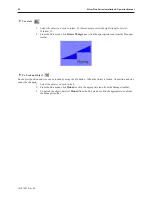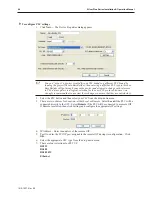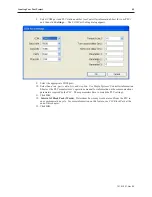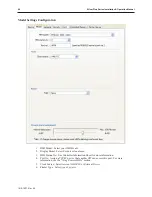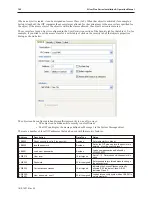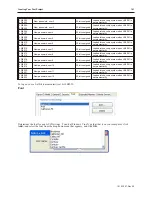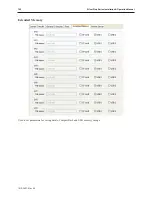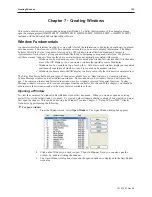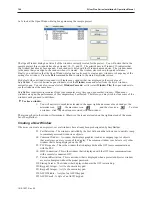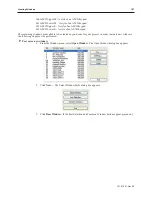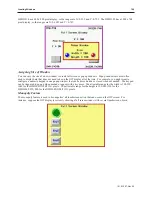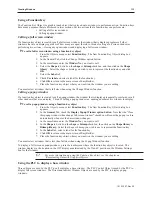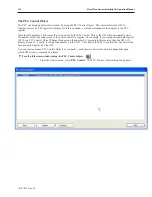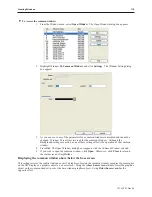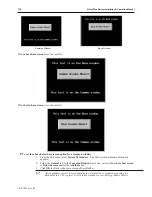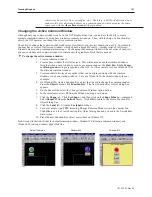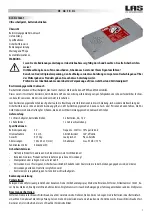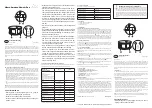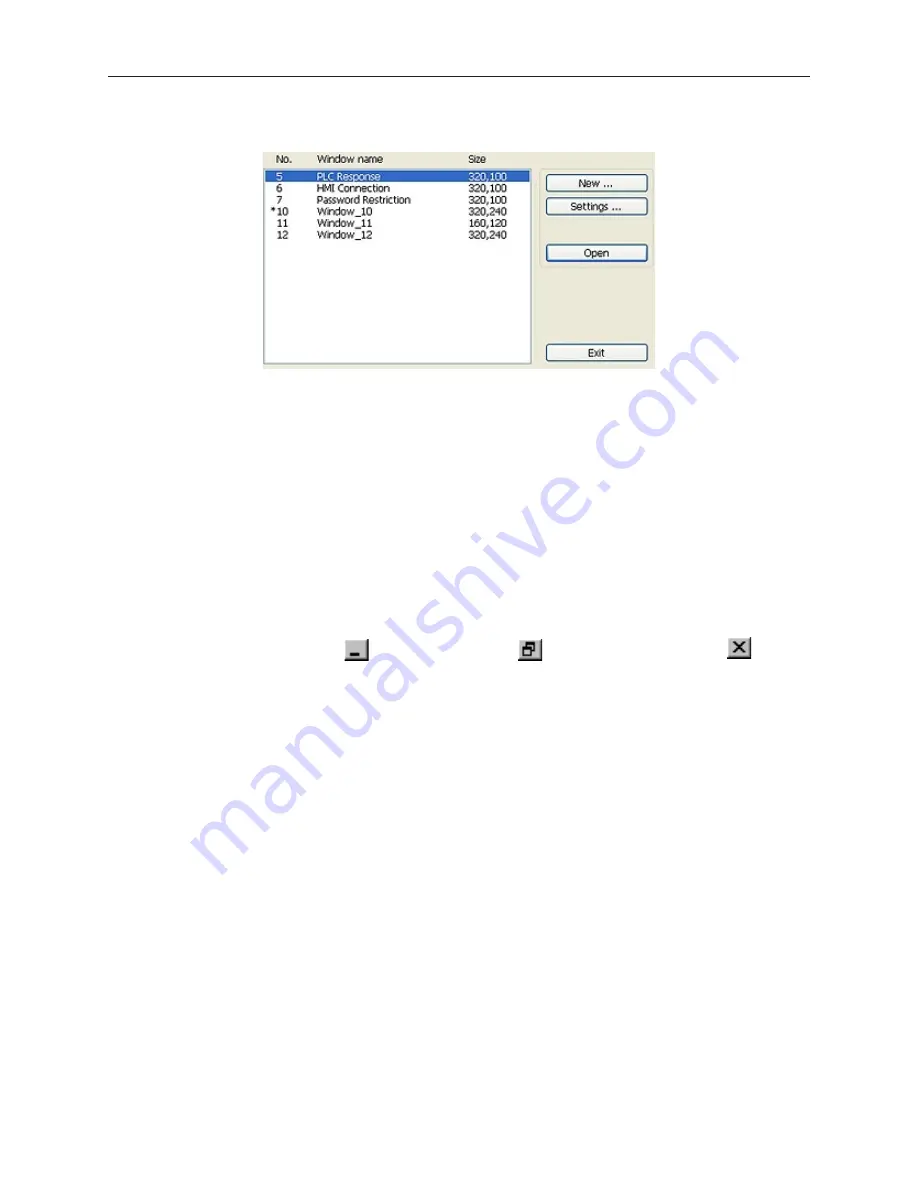
Let’s look at the Open Window dialog box again using the sample project.
The Open Window dialog box lists all of the windows currently created for the project. You will notice that in the
sample project, three windows have been created: 10, 11, and 12. The asterisk next to Window #10 indicates that
this window has already been opened. Each window is listed with the Window name and size. The window name
is the name that you assign to the window when it is created. The window size is shown for quick reference.
Finally, you will notice that the Open Window dialog box is also used to create a new window or change any of the
settings for a window. Press the
Exit
command button to return to the main EasyBuilder screen.
By default, when a window is opened it will replace any window that was displayed in the work area of
EasyBuilder. To switch between open windows, click the
Window
menu and select from the list of windows
currently open. You can also
cascade
(select
Window
-
Cascade
) or
tile
(select
Window
-
Tile
) the open windows to
see the windows at the same time.
EasyBuilder requires more resources from your computer every time you open another window. When many
windows are open, the performance of the computer may be affected. Therefore, you may wish to close some of the
windows until you need to edit them.
4
To close a window
1.
You will notice two small icons located in the upper right hand corner of each window: the
minimize icon
, the maximize icon
, and the close icon
. To close
a window, click the close icon associated with that window .
These icons show in the window if minimized. Otherwise, the icons are located on the rightmost end of the menu
bar of EasyBuilder.
Cre ating a New Win dow
Whenever you create a new project, several windows have already been predesignated by EasyBuilder:
#3: Fast Selection - The window controlled by the Fast Sel button that allows you to quickly jump
to commonly accessed windows or objects.
#4: Common Window - A window that displays graphics (such as a company logo) or objects
that are always on every screen of the display. The common window runs below every other
window that is being displayed on the OIT.
#5: PLC Response - This is the window that is displayed when the OIT loses communications
with the PLC.
#6: HMI Connection - This is the window that is displayed with the OIT loses communications
with a remotely connected OIT.
#7: Password Restriction - This is a window that is displayed when a protected object or window
access is attempted without the proper password.
#10:Startup Screen - The window that displays whenever the OIT is started up.
#50:Keypad1 Integer - A style of numeric keypad.
#51:Keypad2 Integer - A style of numeric keypad.
#54:ASCII Middle - A style of an ASCII keypad.
#55:ASCII Small - A style of an ASCII keypad.
1010-1007, Rev 05
106
Sil ver Plus Se ries In stal la tion & Op er a tion Man ual
Summary of Contents for Silver Plus Series
Page 20: ...1010 1007 Rev 05 16 Silver Plus Series Installation Operation Manual ...
Page 31: ...COM Ports for the HMI5056 5070 1010 1007 Rev 05 Connect the OIT to the PLC or Controller 27 ...
Page 38: ...1010 1007 Rev 05 34 Silver Plus Series Installation Operation Manual ...
Page 49: ...7 Click the Shape tab 1010 1007 Rev 05 Creating Your First Project 45 ...
Page 62: ...1010 1007 Rev 05 58 Silver Plus Series Installation Operation Manual ...
Page 75: ...3 Click OK The System Parameter Settings dialog appears 1010 1007 Rev 05 Using EZware 5000 71 ...
Page 132: ...1010 1007 Rev 05 128 Silver Plus Series Installation Operation Manual ...
Page 156: ...1010 1007 Rev 05 152 Silver Plus Series Installation Operation Manual ...
Page 210: ...1010 1007 Rev 05 206 Silver Plus Series Installation Operation Manual ...
Page 216: ...1010 1007 Rev 05 212 Silver Plus Series Installation Operation Manual ...
Page 246: ...1010 1007 Rev 05 242 Silver Plus Series Installation Operation Manual ...

